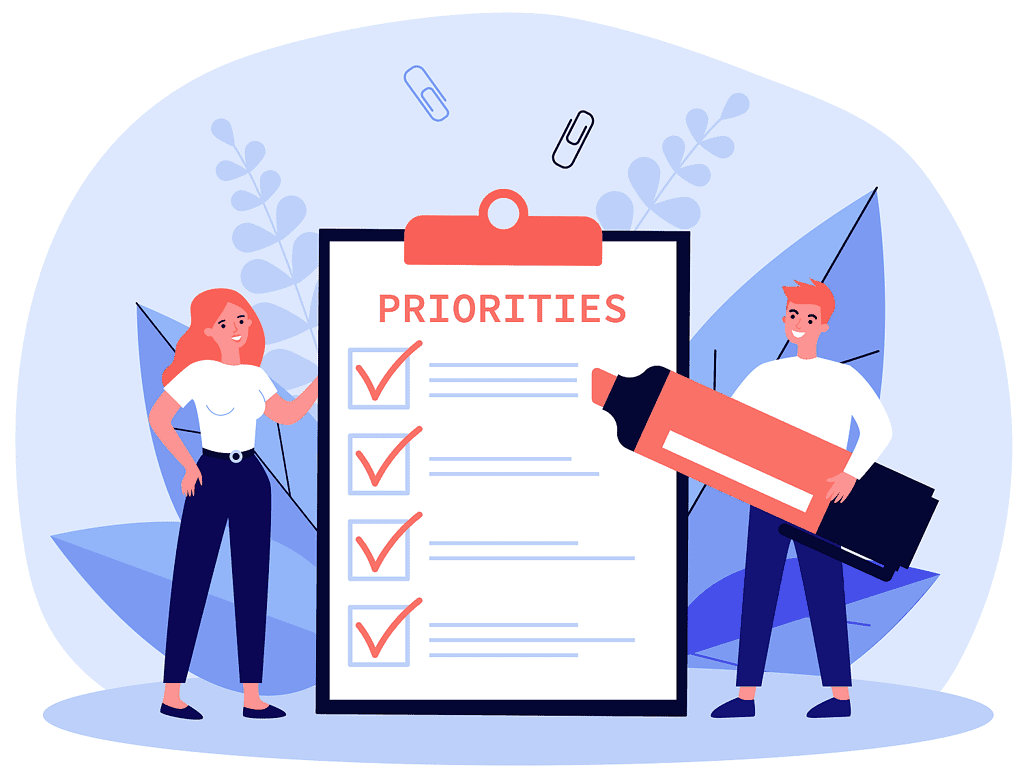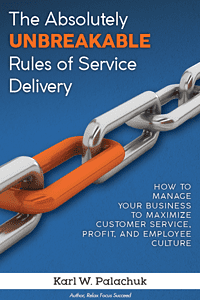Let’s assume that you want to start working based on priorities. Great! How do you get started? Here are a few tips.

There are two primary components of this: The logjam, and competing priorities. The logjam happens when there are too many “high” priority items are on your list. This might be because you’re new to prioritizing and don’t know how to actually figure out what’s first and what’s second. Or it can happen during a “crunch” period when lots of things get dumped in your lap at once.
Competing priorities are much more common after you’ve been prioritizing awhile. Some things naturally fall into categories of high, medium, and low. And the place where we see the conflict is almost always in the high priority category.
Strangely enough, the best long-term strategy for dealing with priorities is practice. And, yes, I understand that doesn’t help today, in this minute, in this crunch. But over time, you get better at things you do more often. So, the practice of prioritizing makes you better at prioritizing. As with so many things, it’s easiest to deal with before the big crunch comes.
Here are a few tips for working through your big list of high priority items.
1. Step back and look at even higher-level values. For example, getting to your kid’s playoff game versus getting out a big quote for a client. The higher-level values are family vs. money. I use this example because it’s one of the most common – and hardest to deal with. It also gets to the real hard part of choosing between priorities. In the abstract, you might choose family. But you can’t choose family every time or there won’t be any money! And, of course, you can’t choose money every time or there won’t be a family to come home to. And that leads to #2.
2. Who won last time? Sometimes, you have constant priority battles that recur all the time. When you think in terms of an ongoing, never-ending series of choices, then stepping back allows you to look at a different level of balance. If two competing high priority values are always coming up against one another, how do you choose?
One long-term option is to work on a balance that is comfortable – even if you’d rather not admit it. Perhaps you’ll want to say that family will win about 70% of the time and money will win 30%. If money has to win some of the time, at least you’re being realistic about it.
3. Time Slice. Many high-priority items are basically non-stop. Whether it’s the laundry at home or invoicing at work, there are some chores that never end. Allocate time to each, even if you never get everything done. There are times when “zero in-box” or a clean desk are simply not realistic options.
Once you admit that more email will come in, and more invoicing always has to go out, these become ongoing tasks. Allocate an hour to each; make as much progress as you can; move on to something else.
4. Pick the priority that can be finished fastest. Sometimes you can see that three or four hours of focused effort will get a big item off your list. Work on that one big item until it’s complete . . . or as complete as you can make it at this time. Once you take care of the “big rocks,” you relieve a lot of pressure from your overall system.
5. Reach a milestone and pass the task to someone else. Another favorite of mine: Get to a milestone. Since I work with a lot of other people, I can make a lot of progress by moving a project to a specific point and then passing it along to someone else. For example, when I write, I sometimes pass chapters to my layout and proof-reading folks as I finish each chapter.
There might be changes down the road, but the overall project is moved forward. Very often, I can get a major piece of something done even if I can’t get the whole thing done. Then I feel better about moving to the next high priority item and moving that forward.
6. Get Help! And all of the items above work better if you have help. In the 21st century, “getting help” no longer means hiring someone full time. You can hire someone part time. Or hire someone over the Internet – in another city or even another country. I have outsourced resources for graphics, administrative work, bookkeeping, layout, proof-reading, marketing, language translation, audio production, and more. The best part about this kind of modern outsourcing is that I don’t have to manage people. I manage jobs.
The biggest message of all: Don’t pretend this will stop!
Don’t pretend that you will break through the current backlog and everything will be wonderful. That day will never come. Work IS like the laundry. As soon as you think it’s done, another pair of socks gets thrown in the basket. As soon as today’s priorities are dealt with, another set appears out of nowhere.
And that’s the way it should be. A never-ending series of tasks and priorities is what keeps you busy – and in business. Don’t wish for it to go away. Manage it.
🙂
— — —
For more great tips on your personal and business success, please check out my new book:
The Absolutely Unbreakable Rules of Service Delivery
Available on Kindle or in Paperback.
More information at https://www.absolutelyunbreakablerules.com/.









